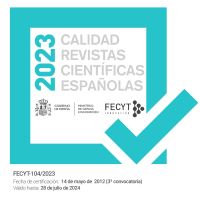Strengths and weaknesses of the implementation of a mediation strategy in secondary school
DOI:
https://doi.org/10.5944/reop.vol.23.num.3.2012.11466Keywords:
educational mediation, collective action, conviviality, dialectical cultureAbstract
ABSTRACT
This article results of the study of the implantation an educational mediation service in a Secondary School in Alicante during the academic year 2009/10. Its purpose is to value the efficiency of a collective action, which tries to make effective the educational aims of prevention, development and social intervention. To carry out this research, a qualitative methodology has been used, based on the study of the results of a questionnaire completed by twenty-six students, who have participated in this programme. The results of that tool have been processed through the qualitative programme named AQUAD 6 (Huber, 2006). This programme contributes greatly to this research because it establishes several categories to understand better the main objective of it. Crucial aspects such as participation’s reason, the conflict’s origin, generated feelings, and the offers of improvement are valued. These five aspects prove that mediation systems in school centers are a valuable tool in order to improve the living together environment, feeding a dialectical culture that steps up communication skills and supportive responsibility.
Downloads
Downloads
How to Cite
Issue
Section
License
Las obras que se publican en la revista REOP están sujetas a los siguientes términos:
1. Los autores conservan los derechos patrimoniales (copyright) de las obras publicadas, y garantizan a la revista el derecho de ser la primera publicación del trabajo al igual que permiten la reutilización de las mismas bajo la licencia de uso indicada en el punto 2.
2. Las obras se publican en la edición electrónica de la revista bajo una licencia Creative Commons Reconocimiento-NoComercial 4.0 Internacional . Se pueden copiar, usar, difundir, transmitir y exponer públicamente, siempre que: I) se cite la autoría y la fuente original de su publicación (revista, editorial y URL de la obra); II) no se usen para fines comerciales; III) se mencione la existencia y especificaciones de esta licencia de uso.
3. Condiciones de auto-archivo. Se permite y se anima a los autores a difundir electrónicamente la publicación de sus obras, ya que favorece su circulación y difusión y con ello un posible aumento en su citación y alcance entre la comunidad académica.






